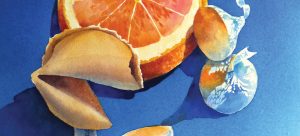
The Bad Boys of Bird-dom
Vultures are proliferating — and living up to
their bad rap as destructive scavengers
By Susan Campbell
Nuisance birds? Is there truly such a thing?? Yes. In fact, there are a number of them: pigeons (or more correctly rock pigeons), Canada geese and house sparrows are just a few of the species that can damage property all across the United States and every day. But there are also birds that may pose a health risk. Vultures, as it turns out, are one such group.
Often referred to generically as “buzzards,” vultures are part of a family of birds found worldwide with dozens of species including South American condors. Here in North Carolina, we have both turkey and black vultures year round. Individuals from farther north significantly boost flock numbers in the cooler months. These large, black scavengers lack feathers on their heads: likely an adaptation to feeding almost exclusively on carcasses. Turkey vultures are the more common species from the mountains to the coast. Soaring in a dihedral (v-shaped profile) on long wings with silver linings, they have extended tails for steering and distinctive red heads. Black vultures, however, have gray heads and white patches on the underwing as well as somewhat shorter wings and tails. As a result they soar with a flatter profile and fly with snappier wing beats. This species has really expanded across the Piedmont in recent years perhaps due to development, along with increased road building and the inevitable road kill that results.
However, as often as one might see a vulture or two overhead, neither species is a common breeder in our part of the state.
Some places, like the town of Robbins, here in Moore County, have had an overabundance of vultures now for over a decade. During a recent conversation with David Lambert, the town manager, it became clear that this small town in the western part of the county indeed has a serious issue. The vulture problem only just made it into the news recently. I was alarmed to learn that hundreds of birds roost around the center of town most of the year. The peak density of 600–800 birds occurs in midwinter. However, even in summer there are at least a few dozen loafing in the area. Deterrents such as noisemakers have been to no avail. An official from U.S. Department of Agriculture’s Wildlife Services even paid a visit a couple of years ago and used selective lethal measures (i.e. shooting a few birds). This actually worked — for a little while.
Vultures can definitely pose a health hazard. In the late afternoon, they will pour into a spot featuring large trees or where there is a tower of some kind and they will perch close together for the night. You can imagine how smelly and nasty their droppings can be under such structures in a short period of time! It is particularly an issue on water towers, which seem to attract both black and turkey vultures. Guano has made its way into drinking water here in the Sandhills (in Vass) and certainly cannot be tolerated.
Vultures can also be very destructive if they are bored. This is especially true of juvenile birds in late summer. Some of them have been known to tear into fabric, rip into rubber and plastic, and even break through doors and windows that are not firmly secured.
No one really knows why the congregation exists in the Robbins area. Some speculate it may have to do with proximity to the Deep River or perhaps it is the abundance of chicken farms in close proximity — or it could be something else entirely. What’s clear, though, is that this is one of the largest congregations of vultures in the state.
The U.S.D.A. is likely to pay this town another visit in the near future to shoot more birds. This time, they’ll probably hang a few (yes, this works) at the largest sites to dissuade roosting flocks from congregating there. But since many of the vultures will have dispersed for the breeding season, things should have improved (one way or another). As far as how many return again next fall, only time will tell. OH
Susan would love to receive your wildlife photos and reports. She can be reached
at susan@ncaves.com





